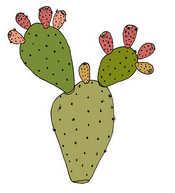

This form has yellow flowers, the red in the throat is from the stamens. Pads are spiny, but the spines are shorter.
This form has pink flowers, and the pads are somewhat less spiny than typical hystricina.
This form has yellow flowers and a dense spination. The spination gets denser with age.
This form has pink flowers and a dense and long spination. The spination gets denser with age.
A spiny plant with long white spines (although not dense) and a nice sized dark pink flower.
A spiny plant with long white spines and very light yellow flower.
A spiny plant with long white spines and pink flowers with orange midstripes.
A spiny plant from Bernalillo Count in New Mexico with shorter brwon spines and longer white spines. Carries a brilliant pink-purple flower.
A spiny plant with a pale yellow flower.
A spiny plant with a pale pink flower. Possibly the Oettingen var of djf...
A spiny plant with a orangy-red flower. No habitat data or whatever. But a very nice colour on a not to big growing plant.
A spiny plant with a light pink flower.